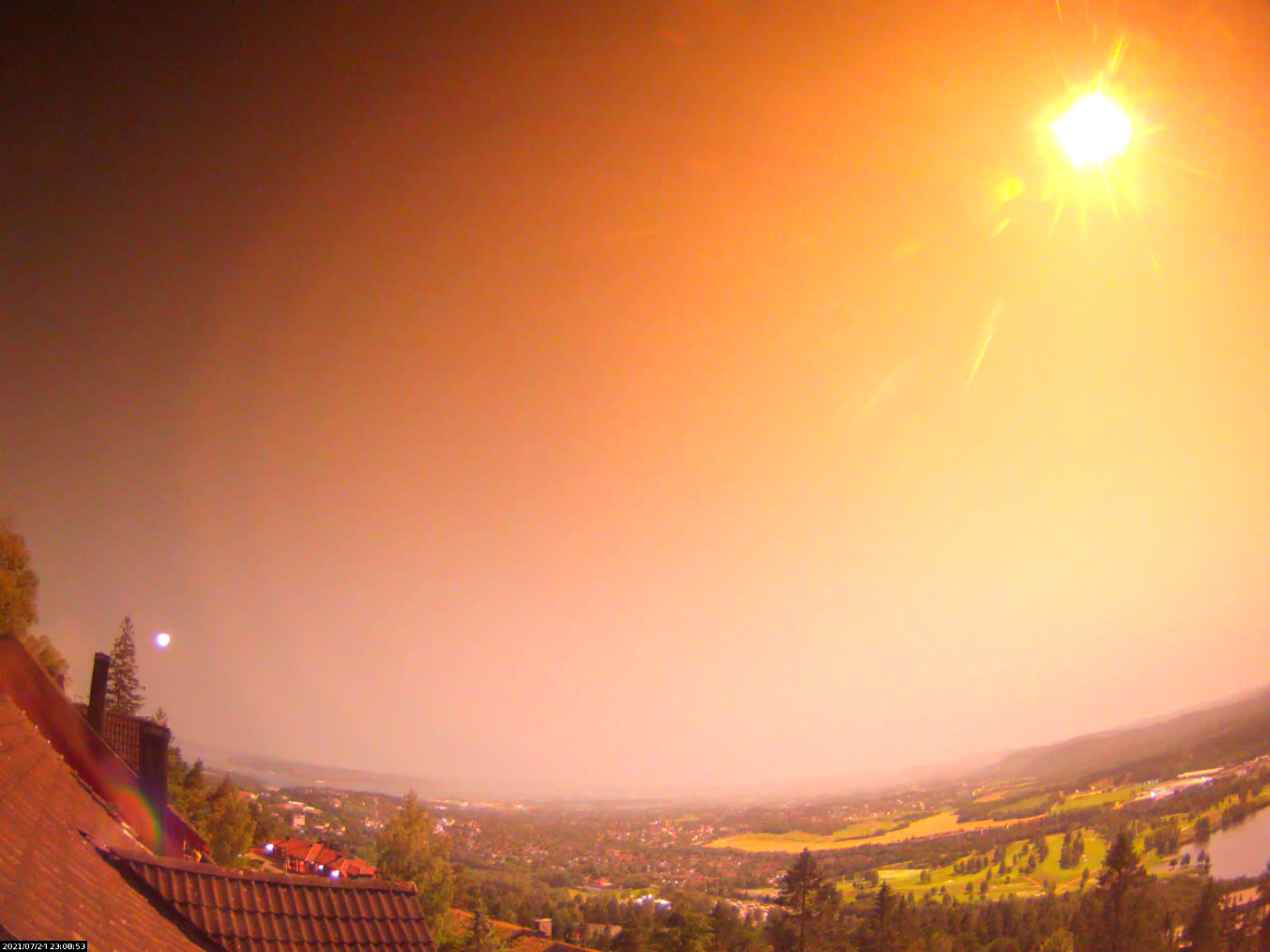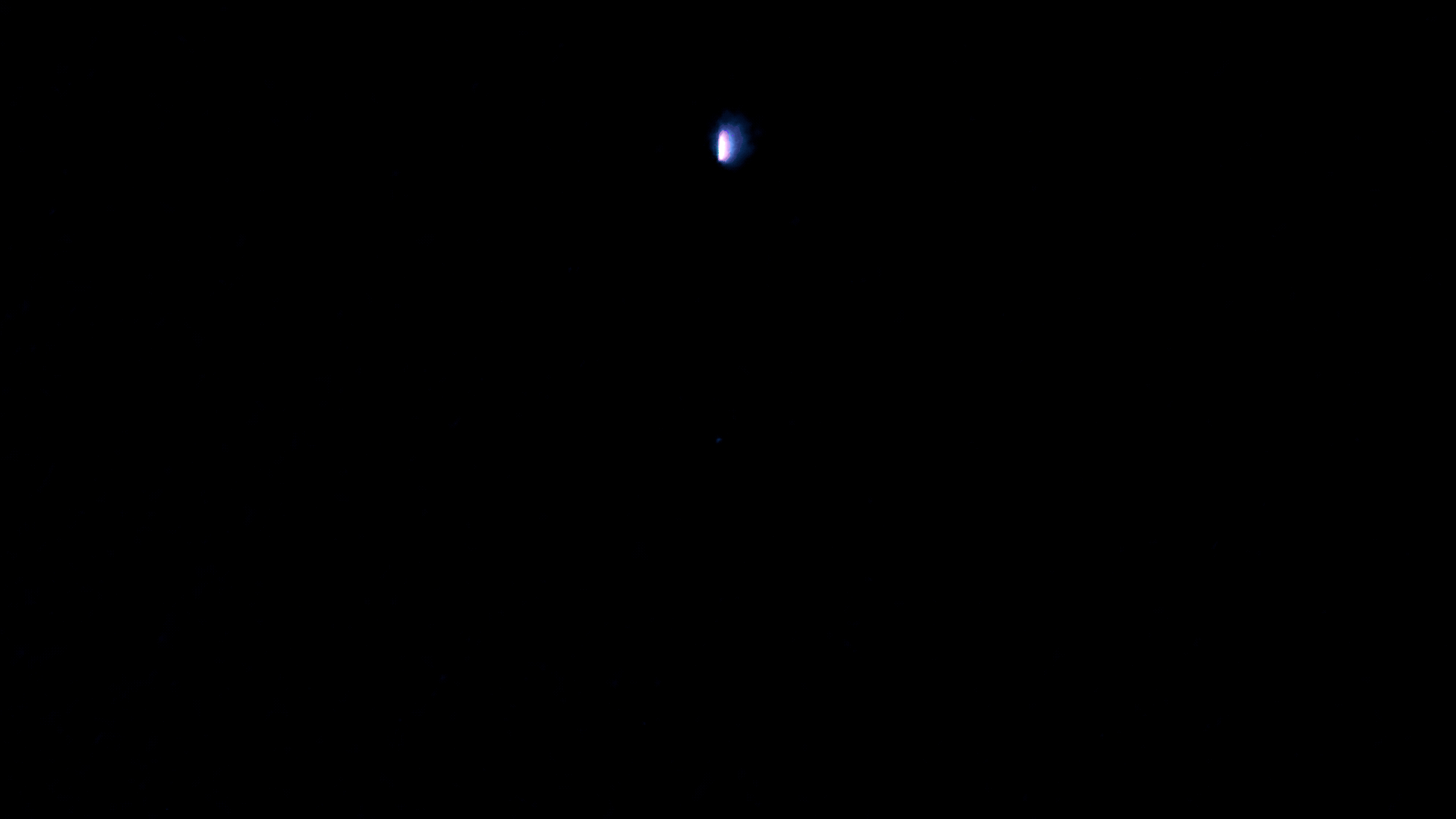Flashing meteor that exploded over Norway landed somewhere in a nearby forest
The meteor shook the air and created a sonic boom as it passed overhead.

The hunt for fragments of an "unusually large meteor" that lit up the skies over Norway on 25 July has begun. The meteor awakened awestruck residents of the country's capital city, Oslo, with the sound of a large explosion.
Footage shows the fireball from the meteor streaking across the sky in a trail of bright flashes at around 1 a.m. local time Sunday morning before it landed somewhere in a forest near Oslo.
The rumbling of the meteor startled numerous residents and led to calls to Norwegian emergency services, though no injuries or damage have been reported yet, the Norwegian police said.
Related: Space-y tales: The 5 strangest meteorites
The Norwegian Meteor Network (NMN), a group that monitors meteor activity in the country, has analyzed video footage of the extraplanetary visitor's trajectory to pinpoint its landing site, which the group believes to be somewhere in Finnemarka forest, located 40 miles (60 kilometers) from Oslo.
"My wife and I heard a loud rumbling noise and saw two powerful flashes of light," Morten Bilet, a meteorite collector and an NMN member, told Verdens Gang, a Norwegian newspaper. "It's definitely a large meteor that has come in over eastern Norway. This is a big deal."
The meteor was traveling up to 43200 miles per hour (72000 km per hour) and lit up the sky for five to six seconds, according to the NMN. The meteor's pressure wave also caused a strong gust of wind, the group said.
Sign up for the Live Science daily newsletter now
Get the world’s most fascinating discoveries delivered straight to your inbox.

Bilet told Reuters news agency that the meteor was deflected to Earth when it hit our solar system's asteroid belt while traveling between Mars and Jupiter, but further details about the otherworldly arrival remain elusive.
"With an object of this size, it's nearly impossible to get an overview of absolutely everything," Bilet said. "It would have been easier had it had a steeper course. We don't know yet whether it was a rock or an iron meteorite. From experience, it's more likely to be a rock, but we can't draw conclusions yet." Stone or rock meteorites tend to have formed on the surface or crust of a planet or large asteroid, whereas iron ones come from the planet or asteroid's core.
The NMN conducted a search for fragments from the meteor Sunday morning and into the afternoon. The group suspects that, given the tough-to-find location somewhere in the middle of a forest, any meteorite fragments could take up to 10 years to discover.
Meteors are small chunks of space rock that can be as small as grains of sand or as large as boulders roughly 3 feet (1 meter) wide and are scattered throughout the solar system. Much like bigger space rocks, called asteroids, they are leftovers from the formation of the planets.
The blazing rock that rumbled and flashed above Oslo was a special type of meteor called a "fireball" meteor, defined as any meteor emitting light of an intensity equal to or greater than that of Venus in the night sky, according to the American Meteor Society (AMS).
Fireballs burn brightly because of their size and speed — which creates a significant amount of friction when the rocks hit Earth's atmosphere. As the space rocks enter the atmosphere at speeds far exceeding the sound barrier, they also cause a sonic boom, which is likely the cause of the explosion heard by Oslo residents. Several thousand fireball meteors enter Earth's atmosphere every day, but most go unnoticed because they're not bright enough to see with the naked eye or they pass over uninhabited areas, according to the AMS.
One fireball meteor was witnessed passing over England, Wales and northern France in March 2021, Live Science previously reported. In the same month, a meteor the size of a bowling ball exploded over Vermont with the force of 440 pounds (200 kilograms) of TNT, Live Science previously reported.
The most explosive meteor event in recent history occurred near Chelyabinsk in central Russia in 2013. As the meteor struck the atmosphere, it created a blast roughly equivalent to 400-500 kilotons of TNT, or 26 to 33 times the energy released by the Hiroshima bomb. Fireballs rained down over Chelyabinsk and its environs, damaging buildings, smashing windows and injuring approximately 1,200 people.
Originally published by Live Science.

Ben Turner is a U.K. based staff writer at Live Science. He covers physics and astronomy, among other topics like tech and climate change. He graduated from University College London with a degree in particle physics before training as a journalist. When he's not writing, Ben enjoys reading literature, playing the guitar and embarrassing himself with chess.









